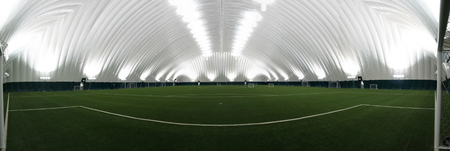
We collect basic website visitor information on this website and store it in cookies. We also utilize Google Analytics to track page view information to assist us in improving our website.
Soccer is blowing up in popularity—the number of soccer players in the US is second only to China. Soccer may seem like a relatively safe sport, but there are plenty of ways to injure yourself while playing.
Legs and ankles can be injured by sliding tackles. Wrists and elbows can get hurt after falls. Head injuries and concussions can result from strikes from the ball. When you think about it, soccer can be a rough sport and could easily lead to injuries if the dangers are taken for granted. In this blog, we’ll cover a few ways that you can keep yourself or others safe while playing soccer.
Gear Up Appropriately
The best way to fix an injury is to prevent it from happening in the first place. The first step to making sure you’re safe on the field is to make sure that the gear you’re using is well suited to protect you.
The only real soccer gear that’s typically needed are shoes and shin pads. Shin pads are usually the only pads worn, but many players wear smaller shin guards to try to keep as much mobility as possible. It’s still important, though, to make sure that the pads cover any areas that could be hit and that they’ll provide the support that’s needed should a collision happen. You can’t always predict when a slide tackle might knock you off your feet.
Get Field-Side Medical Responders
These days, sports at all levels will have designated medical individuals or teams to deal with injuries as they happen. If your team doesn’t have someone to look after injuries, you might want to think about finding one.
Have a Well-Stocked Medical Kit
This should pair with having a trained medical provider, but if you don’t have one of them, simply having the supplies to deal with an injury is a step in the right direction.
Things like ice, tapes, bandages, eyewash, antiseptic wipes, tweezers, scissors… Anything that you can think of that you might need is good to have in a medical kit. If you’re not sure, ask someone that is trained in emergency care like a first responder or paramedic.
Part of a medical kit should be a phone or radio that can be used to call for help or an ambulance should a serious injury occur. If a player is in extreme pain or has lost consciousness, an ambulance needs to be called right away.
Watch the Weather Report
Another source of injury that most people forget to plan for is the weather. Being outside means players are at the mercy of Mother Nature. High winds can send debris through the air, rain can create slick playing surfaces, and cold or heat can create hypo- or hyper-thermic situations. Spending a few minutes looking up a weather report can protect players, especially, young ones from dangerous conditions.
And don’t forget about extreme weather systems that can attack without warning. Not all weather reports are perfect. Be sure to keep an eye out for sudden changes in the weather—the worst storm is the one you’re not prepared for.
Of course, the best place to be when the weather is getting hairy is inside. Playing indoor soccer inside of a dome might be the safest place to take your game!
 |
